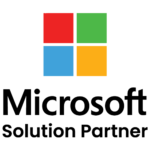Rewards
.





CANADA
55 Village Center Place, Suite 307 Bldg 4287,
Mississauga ON L4Z 1V9, Canada
Certified Members:
.




Nowadays, developers have two modest cross-platform application development alternatives: Flutter and React Native. We could employ both frameworks to build cross-platform mobile apps and desktop apps. Both frameworks look identical from the outside and in the available features. Optimistically, you have already read many comparisons and reviews about Flutter and React Native.
However, while providing flutter application development services, many developers assume that Flutter won’t be widely used because it uses an unfamiliar programming language. A programming language is simply an interface for the developers to interact with the framework. Ultimately, there are many reasons why Flutter is better than react Native. Here, in this blog, we’ll elaborate on the following Top 6 Reasons Why Flutter Is Better Than React Native.
Nowadays, the performance is so underrated because of some powerful devices with numerous sorts of conditions. Many users may try to run your application should work fine in all such situations. Consequently, performance is still a crucial factor in a modern cross-platform application—indeed, an application written without any framework for quick feature delivery.
The native UI and the JavaScript engine are two independent modules in typical react development services. React Native uses React state updates to render native platform-specific UI components. On the other hand, it runs the application’s JavaScript using a JavaScript engine (in most cases, Hermes).
Every JavaScript-to-native and native-to-JavaScript call, similar to Apache Cordova’s approach, runs through a JavaScript bridge. React Native secretly bundles your application with a JavaScript engine at the end of the process.
There are no JavaScript runtimes in Flutter apps. Instead, the bidirectional communication stream between Dart and native code is built via binary messaging channels. Because of this binary communications protocol and Dart’s ahead-of-time (AOT) compilation process, Flutter provides near-native performance when invoking native code from Dart. However, when there are more than typical native calls, React Native apps may struggle.
Platform-specific UI components are rendered using React Native. For example, running your program on an Apple mobile device will cause native iOS UI elements. Each platform has its design concepts for its user interface aspects.
Some systems contain UI components that aren’t available on others. As a result, if you use React Native, even a minor UI change necessitates testing across several platforms. You also won’t be able to get beyond the limits of platform-specific UI elements. The react development services are
The Flutter SDK has its own set of UI tools. As a result, your Flutter app will look the same across all operating systems. Unlike the platform-specific UI elements in React Native, the Flutter team can add new functionalities to each UI element. You can alter the theme of your app based on the user’s preferences on a particular operating system, thanks to flutter-theming.
Almost every modern app’s design concept displays the app’s brand. Flutter encourages developers to create a consistent user experience with a uniform GUI layer across all supported operating systems.
React Native has a Flexbox concept, an ideally based layout system designed with the Yoga layout engine. All web developers and UI designers are acquainted with CSS FlexBox styling. React Native’s design syntax is similar to CSS FLexBox compositions. However, many developers often struggle with advanced CSS styles. They usually let the team’s User Interface (UI) developers fix CSS. Thus, if you use React Native for your next app, you require hiring a UI developer or asking mobile developers to become familiar with CSS FlexBox Syntax.
Flutter has a widget tree-based layout system. In other words, Flutter developers are usually defining widgets in a render-tree-like data structure by superseding the build technique. As a result, they have a good idea of how each device will look on the screen.
If you use Flutter, you won’t need additional UI developers or FlexBox skills from your existing dev. Rather than the FlexBox notion, even a backend developer may immediately grasp this widget-tree concept.
You could increase the feature development speed of your cross-platform app thanks to Futter’s tree-based layout system. When the layout becomes multifaceted, programmers could group the widget into different sections by assigning them to the other Dart variables.
React native can support Android and iOS platforms. However, there are lots of splits: react-native windows and react-native macOS. Therefore, if you wish to make up your desktop application for your existing React Native application, there are several alternatives. Unfortunately, every famous React Native library doesn’t support all such forks. Moreover, there is no other full-featured React Native fork for Linux yet.
Flutter formally supports Android, iOS, Linux, Fuchsia, Windows, macOS, and the web. All supported operating systems use the identical rendering backend, Skia. Furthermore, Flutter motivates all plugin developers to add executions for all the platforms by offering a higher performance such as a Dart-to-Native binary transmission mechanism and compromised documentation. Therefore, almost all famous Flutter plugins will work on supported platforms.
You’re likely aware that Google is working on Fuchsia, a new operating system from the ground up. Fuchsia is powered by the Zircon kernel, based on a microkernel architecture. Google’s goal, according to Wikipedia, is to create Fuchsia. This universal operating system works with practically all devices (including embedded devices such as digital watches and traffic light systems). In addition, Fuchsia is being built by Google using a variety of learnings from several platforms. As a result, Fuchsia has a better chance of success in the operating systems market.
Now, you may make your mind clear about what cross-platform mobile framework you should choose? The react native project is almost two years elder than the Flutter project, and it’s the entire React community is the backbones. On the other hand, Flutter’s community is still new and developing because Flutter doesn’t operate Angular.
Moreover, Dart wasn’t a widespread general-purpose programming language prematurely like JavaScript. Therefore, we cannot compare Flutter’s features with other mature cross-platform frameworks. But, Flutter has solved the cross-platform issues via the most beneficial approach.
Both the frameworks work on top of a native host application. React Native cannot enhance its performance the same as Flutter because of its JavaScript runtime-based architecture. It would be best if you endeavored to build an application with Flutter. Don’t be afraid of things that Dart is an unfamiliar language.
After concluding all the aspects, you may have decided to opt for a flutter development through programmers; if so! you can hire a flutter developer from QServices to get valuable services.
Schedule a Customized Consultation. Shape Your Azure Roadmap with Expert Guidance and Strategies Tailored to Your Business Needs.
.





55 Village Center Place, Suite 307 Bldg 4287,
Mississauga ON L4Z 1V9, Canada
.




Founder and CEO

Chief Sales Officer
